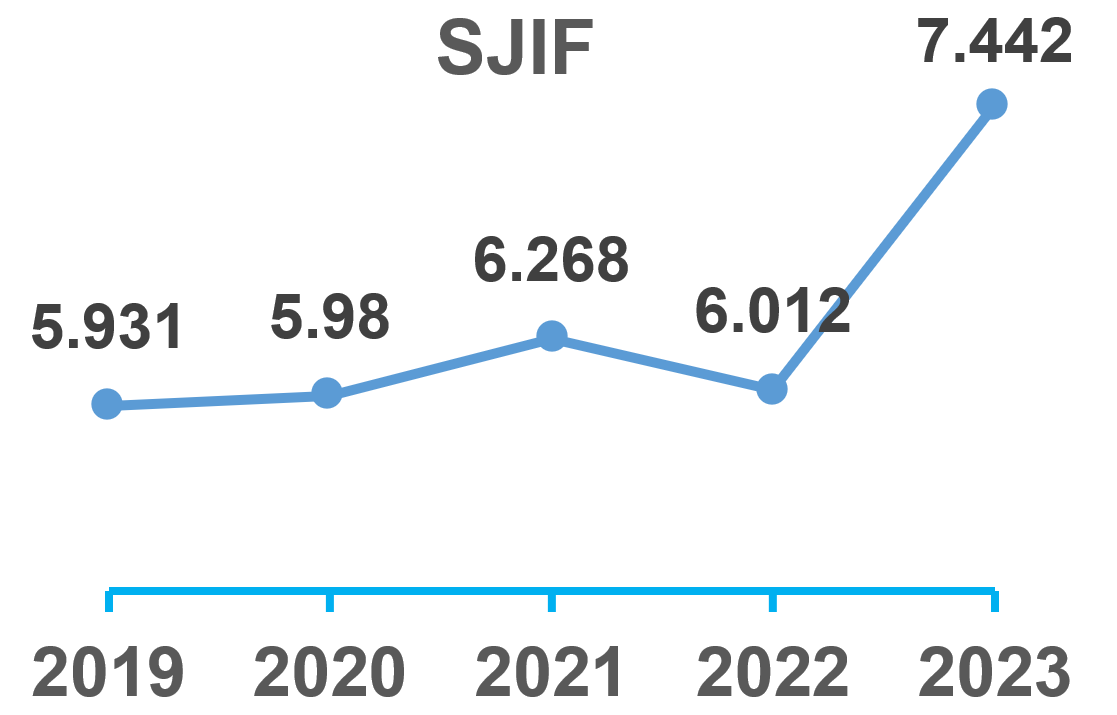NAAS Score (2024): 5.85
Publishing Ethics and Malpractice Statements
The journal of Agricultural Engineering (India) encourages submission of manuscripts by authors of any country, irrespective of their memberships with the ISAE. Only manuscripts of sufficient quality that meet the aims and scope of the JAEI are considered for publication. This journal uses double-blind review process for the submitted manuscripts. A decision on acceptance / non-acceptance of a manuscript is taken after due consideration of peer-review reports, recommendation of the Editor, and examination of the content of the manuscript by the Editorial Board. Submission of a manuscript to the journal does not guarantee eventual publication in the JAEI.
All parties [author(s), journal editors, peer reviewers, publisher (ISAE)] involved in publications of research papers in the JAEI are expected to follow the highest standards of publication ethics. This includes all parties treating each other with respect, dignity; and without discrimination, harassment, bullying or retaliation. The journal is also committed to maintain integrity in the publishing process.
The policies and procedures of the journal support its editors, reviewers, and authors in performing their ethical duties under the set guidelines. Publication ethics and publication malpractices statements of the Journal of Agricultural Engineering (India) is based, in large part, on the guidelines and standards developed by the Committee on Publication Ethics (COPE). The relevant duties and expectations of the authors, reviewers, and editors of the journal are listed below:
1. Ethics and Responsibilities of Authors
1.1 Responsibilities of Authors
1.2 Authorship & Authors Contribution
1.3 Pre- and Post-publication Corrections
1.4 Conflict of Interest & Competing Interests
1.5 Journal Publishing Agreement
2. Ethics and Responsibilities of Peer Reviewers
3. Ethics and Responsibilities of Editorial Board Members
- Ethics and Responsibilities of Authors
1.1 Responsibilities of Authors
Authors of a manuscript should present original research with an accurate account of the work performed along with an objective discussion of its significance. Authors are responsible for the truth and accuracy of their data. Underlying data should be represented accurately in the manuscript. Upon request, the authors are required to send relevant documentation (in the form of raw data, samples, records, etc.) for verifications of their validity. Research data after publication should be as retained by the authors as per the policies of the organisation to which they belong.
A manuscript should contain sufficient details and references to permit the readers to replicate the work, if required. Fraudulent or deliberate inaccurate statements or data constitute unethical scientific behaviour, and may be a reason for rejection of a manuscript or even retraction of a published article. The authors should also ensure that they have written entirely original work. In case data/ statements/derivation of another published work have been reproduced, they must be appropriately cited or quoted satisfying the existing laws on plagiarism. Excessive and inappropriate self-citations or coordinated efforts among several authors to collectively self-cite is strongly discouraged. Plagiarism in all its forms constitutes unethical behaviour, and is unacceptable.
The author(s) may ensure that a submitted manuscript reports an original work, and its contents have not been published elsewhere (partially or in full) in any form or language; unless the reported work concerns an expansion of a previous work that is duly cited. A single study should not be unduly split up into several parts that are not completely separable for scientific reporting for the purpose of multiple submissions. Concurrent submission of one manuscript to more than one journal, or before a decision is communicated by the first journal, is considered as unethical behaviour. If a similar or the same manuscript is later found to have been published elsewhere in any form, the publisher (ISAE) of the Journal of Agricultural Engineering (India) shall remain free to lodge a complaint to that publisher(s) and institution(s)/organisation(s) to which the author(s) belong to.
1.2 Authorship & Authors Contribution
The names of the authors are to be listed in the manuscript in order of their contributions to the manuscript, and all authors take responsibility for their own contributions. Authorship should be limited to those who have (i) made significant contribution to the conception or design of the work; or the acquisition, analysis, or interpretation of data; or the creation of new software/ model used in the work; or have drafted the work or substantively revised it; (ii) approved the submitted version (and any substantially modified version that involves the author's contribution to the study); and (iii) agreed to be personally accountable for their own contributions and for ensuring that questions related to the accuracy or integrity of any part of the work (even ones in which an author was not personally involved) are appropriately investigated, resolved, and documented in the literature. All those who have made substantial contributions should be listed as co-authors. Those who have participated in certain substantive aspects of the manuscript (e.g., language editing, etc.) should be recognised under the Acknowledgement Section.
Each author is responsible for ensuring that questions related to the accuracy or integrity of any part of the work are appropriately investigated and resolved. For transparency, authors should include an Author Statement outlining their individual contributions to the manuscript as: Conceptualisation; Data generation; Data analysis; Funding acquisition; Investigation; Methodology; Project guidance; Software development and validation; Writing of manuscript for presentation of work and editing [guideline: CRediT (Contributor Roles Taxonomy)]. The corresponding/ submitting author is responsible for including the contributions of all authors in the manuscript before the REFERENCES section at the time of submission. The submitting author is responsible for providing the contributions of all authors at submission time so that this statement can be published in their article.
Authors should carefully consider the list and order of authors before submitting their manuscript and provide the definitive list of authors at the time of the original submission. Request for any addition, deletion or rearrangement of author names in the authorship list under exceptional circumstances should be made before the manuscript is accepted for publication. Request for such a change should include specific reason(s) for the requested change in author list, along with a written confirmation (e-mail / letter) from all (original submission and proposed) authors that they agree with the proposed addition, removal, or rearrangement without any conflict of interest. The decision of the Editor-in-Chief on the matter would be final and binding to all concerned.
The corresponding author should ensure that (a) all co-authors have agreed to full content of a manuscript, including the author list and author contribution statements; (b) there is no conflict of interest; (c) the submission satisfies all stated policies of the journal, and (d) all authors have agreed to its submission to the journal for publication. Post-submission of a manuscript, the corresponding author shall remain responsible for accuracy of its full content in the print-proof, including the names of co-authors, addresses, and affiliations. After publication, the corresponding author shall be responsible for appropriate response to any query about the published article through interactions with the co-authors, as deemed fit.
1.3 Pre- and Post-publication Corrections
Authors have obligation to correct any misreporting once they discover the same during processing of the manuscript, and post-publication. In such a case, author(s) should immediately write to the Editor-in-Chief and explain in what way the error is impacting the manuscript. A decision on how to correct the manuscript (Erratum, Corrigendum, including retraction) will depend on the nature of the error. Minor corrections like spelling mistakes or grammatical errors which do not alter the understanding of the content of the article will not be corrected after publication. An Errata will be published only when mistakes are recognised in the published article which remained unnoticed during editing and layout setting in figures, tables, etc., and have caused incorrect understanding of the article. A corrigendum will be published when the authors realise that the errors in the published article could affect the validity of the scientific content, or its accuracy. If a reader detects a genuine error in a published article, he can submit the same as a letter to the Editor-in-Chief. The author, editor, and a reviewer would then assess the validity of the error pointed out. Appropriate corrigenda may be published for genuine error(s) with reference to the letter along with the answer(s) provided by the author(s). Retractions are issued if there is clear evidence that the reported findings in an article are scientifically unreliable / unethical/ plagiarism beyond acceptable limit. Any decision on the above shall be taken by the Editorial Board of the journal. When post-publication discussion/ critiques are submitted to the journal, known as ‘letters to the editor’, original authors of the critiqued article are invited to write a ‘response’ or ‘reply’. Post-publication discussions may be submitted within a 3-month period following the publication of the article, scientifically justifying the need for post-publication discussion. It should not exceed 3 double-spaced manuscript pages including references, figures, tables, and captions. The title of the Discussion should begin with “Discussion of” followed by the title of the original article along with its DOI. The Editorial Board may consider for a post-publication discussion if it is established to be constructive and useful to the community, after been peer-reviewed.
1.4 Conflict of Interest & Competing Interests
All authors and co-authors are required to disclose during submission of a manuscript any potential conflict of interest (e.g., employment, consulting fee, sponsoring organisation policy/ regulation, research contract, patent licence, advisory affiliations, etc.) either stating that no conflict of interest exists or describe the nature of any potential conflict. Authors are responsible for obtaining any permission necessary to include an images or artwork for which they do not hold copyright in their articles or to adopt any such images or artwork for inclusion in their articles. The publisher of the journal does not call for such permission, and presumes that the author(s) have taken due care of the same. The source(s) of financial support for a reported research work should also be disclosed by the authors in the manuscript. The author(s) of a manuscript agree that if the manuscript is accepted for publication in the Journal of Agricultural Engineering (India), they shall transfer all copyrights of the manuscript in all forms and media to the publisher- the Indian Society of Agricultural Engineers (ISAE). All proprietary rights (as patent right), however, shall remain vested with the author(s).
1.5 Journal Publishing Agreement
While submitting a manuscript to the Journal of Agricultural Engineering (India), the authors will give an undertaking for maintaining transparency and integrity and practicing publishing ethics by submitting the “Journal Publishing Agreement Form” and certifying the following:
- Each author has participated sufficiently in one or more activities of the reported research work (as conception, design of reported research, analysis of data, writing of the said manuscript), and is responsible for it. The contribution of each author has been mentioned in the manuscript. All authors have duly seen and agreed to the version of the manuscript submitted to the JAEI.
- The contents of the manuscript have not been published in any form, partially or in full, anywhere till date. The authors have neither submitted nor shall be submitting the same anywhere else for publication till a decision on its publication is communicated by the JAEI.
- The data and results embodied in the manuscript are from an original research work of the author(s).
- The author(s) have satisfied themselves that the full contents of the manuscript including text, data in any form in text/ table/ graph, photograph, illustration/ figure, or in any other form do not attract plagiarism, including text-recycling, or self-plagiarism regulations in force at the time of submission/ publication.
- The author(s) undertake full responsibility for the data/ statements/opinions contained in the manuscript. The publisher (ISAE) of the JAEI and its officials are fully absolved of the same by the author(s).
- Due mention of the organisation(s) where the research work was undertaken has been made and funding obtained are duly acknowledged.
- There is no conflict of interest on the manuscript. Competing interest in disclosure of the research work has been considered by the author(s).
- The authors have included information on any pre-print submission of the manuscript, and agree to update the pre-print record with a DOI and a URL link to the Version of Record, if their manuscript is accepted and published in the JAEI.
- In case the reported research work in the manuscript involved use of humans or animals as subjects in any form, such work was carried out by the authors in accordance with the applicable laws and ethics. Informed written consents of the human subjects were taken by the authors, and are on record.
- The authors have conformed to the highest standards of all ethical policies of the JAEI in the submission of accurate data/ statements, and that they acknowledged the work of others when applicable.
- The revision(s) as per comments by reviewers/editors will be carried out in a time-bound manner. The authors agree that, if requested for verification by the editors, they shall make available the data upon which the above manuscript is based.
- Unless under extraordinary situation, the manuscript will not be withdrawn during the course of review/processing. A written permission of the Editor0in-Chief shall be required for the same.
- Upon acceptance of the manuscript for publication in the Journal of Agricultural Engineering (India), the author(s) shall transfer all copyrights in and to the manuscript in all forms and media to the publisher- the Indian Society of Agricultural Engineers (ISAE). The authors, however, reserve all proprietary rights (as patent right), other than copyrights.
1.6 Ethical Oversight Policy
As per the Committee on Publication Ethics (COPE) “ethical oversight should include, but not limited to, policies on consent to publication, publication on vulnerable populations, ethical conduct of research using human subjects, ethical conduct of research using animals, handling confidential data and ethical business/marketing practices”, and is adopted by the JAEI. Authors are required to satisfy themselves that no violation of Ethical Oversight Policy has occurred through their submission of a manuscript to the JAEI.
In case the reported research work in the manuscript involved use of humans or animals as subjects in any form, the authors do confirm that such work was carried out by them in accordance with the applicable laws and ethics. Informed written consents of the human subjects were taken by the authors, and are on record or described within the article.
- Ethics and Responsibilities of Peer Reviewers
All manuscripts received for review are treated as confidential documents. Reviewers must not share the review or information about the manuscript with anyone or directly contact the author(s). Reviews should be conducted objectively. Reviewers should express their views objectively with supporting arguments and references, if necessary. A reviewer should also bring potential ethical issues in a manuscript to the attention of the Editorial Board, including any substantial similarity or overlap between the manuscript under consideration, and any other published document(s) of which the reviewer has personal knowledge. Reviewers who have accepted reviewing assignments of manuscript are normally expected to submit their review comments to the concerned editor within three weeks from receipt of a manuscript.
Reviewer should declare to the Editorial Board any potential competing interests, and should decline to review a manuscript with which he (she) believes to have competing interests resulting from competitive, collaborative, or other relationships, or connections with any of the authors, companies, or institutions connected to the manuscript.
Unpublished contents disclosed in a submitted manuscript must not be used by a reviewer in any form, including his (her) own research without the written consent of the author(s). The Editorial Board should be informed on the same by the reviewer. Information or ideas obtained through peer review must be kept confidential and not used for personal advantage. Personal criticism of the author(s) is inappropriate, and must be avoided. On accepting a review assignment, a reviewer should follow highest level of reviewing ethics. The Editorial Board of the journal lays emphasis on the same, and de-lists such reviewers who do not follow the code of practice.
- Ethics and Responsibilities of Editorial Board Members
An Editor shall ensure that the peer review process is unbiased, timely, and of high technical quality; and also maintain technical standards of high order for the manuscripts that are recommended for publication. Research manuscripts are typically reviewed by at least two external and independent reviewers of requisite expertise, and where necessary the Editor may seek the opinions of additional reviewers. The Editor shall select reviewers with expertise in the relevant technical field, taking into account the need for appropriate, inclusive, and diverse unbiased representation. All Editors shall ensure the integrity of the double-blind review policy of the journal by not revealing the identity of the author(s) of a manuscript to the reviewers of that manuscript, and vice versa. An Editor also protects the confidentiality of all material submitted to the journal and all external communications.
An Editor shall give due considerations to all disclosures of potential conflicts of interest and suggestions for self-citation made by the reviewers in order to determine whether there is any potential for bias. When evaluating a manuscript for publication, in addition to considering the standard criteria pertaining to the rigour of the manuscript; adequate weights are given to other attributes as the extent and quality of its presentation, reliability and authenticity of data and statements, and contribution to new knowledge. Decision on recommendation for a manuscript by an Editor is normally arrived at through internal consultations with the concerned Editorial Team. Recommendation of an Editor on a manuscript is forwarded to the Editor-in-Chief for a final decision. After technical editing at the desk of the Editor-in-Chief, the corresponding author is given another opportunity to incorporate necessary improvements in the manuscript. The Editor-in-Chief then makes necessary technical consultations with the Editor or a technical expert, as deemed fit, before arriving at the final decision on acceptance of a manuscript.









